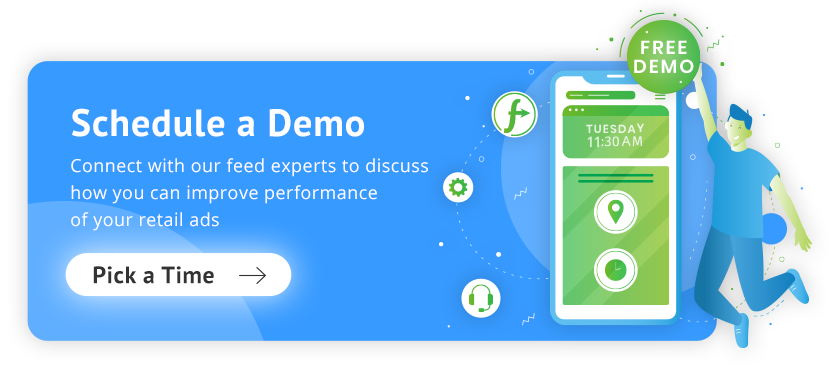In recent years, it has become important to recognize customer touchpoints. Your customer's journey consists of different stages, and along this journey, shoppers engage with various aspects of your brand, such as visiting your website, using your mobile app, or interacting with your social media posts. Every single one of these touchpoints plays a crucial role in creating a smooth and consistent customer experience that is both informative and enjoyable.
As an increasing portion of the customer journey takes place online, it's vital for brands to prioritize their digital touchpoints and optimize them.
- Digital touchpoints are essential in the customer journey, spanning multiple phases such as awareness, consideration, decision, retention, and loyalty.
- It is crucial for online sellers to be present at every digital touchpoint to meet customer expectations and influence their purchasing decisions.
- Strategies such as using Google Shopping, social media advertising, creating social proof, and monitoring reviews can be effective in influencing consumers at different touchpoints.
What are digital touchpoints?
Digital touchpoints are the various moments in which a customer interacts with a company through online channels. These touchpoints can occur before, during, or after a sale has taken place. They play a crucial role in shaping the customer experience and building customer loyalty.
Digital touchpoints are present within distinct stages of the sales funnel or buyer journey. This encompasses three primary phases that occur before and during purchase: Awareness, Consideration and Purchase/Decision. Additionally, it is important to incorporate two post-purchase phases that focus on fostering long-term customer relationships: Retention and Loyalty/Advocacy.
The marketing rule of 7
With numerous distractions and high competition in the digital landscape, it often takes multiple interactions with a brand's digital touchpoints to build awareness, trust, and familiarity.
The marketing rule of 7 is a concept that suggests a potential customer needs to come across a marketing message at least seven times before they take action or make a purchase. This means that it takes 7 digital touchpoints before a sale is made.
This rule emphasizes the importance of repeated and consistent exposure to marketing messages across various online channels.
Why is it important to understand and optimize digital customer touchpoints?
In today's digital age, people instinctively turn to the internet to research and connect with businesses. This makes it crucial to optimize your digital touchpoints, ensuring a smooth customer experience.
Each digital touchpoint contributes to the overall impression customers have of your brand. Since customer experience is a key competitive factor for 89% of businesses, it's vital to create value at every touchpoint. Remember, these touchpoints are important in securing conversions. If one touchpoint fails, it can mean losing potential sales and opportunities.
That's why it's essential to identify and improve every step in the customer journey, preventing unnecessary loss of potential customers due to issues such as broken website pages or unresponsive live chat messages.
How to map your customer journey?
Mapping the customer journey is an important task that helps visualize each step a customer goes through. It's crucial because it allows us to identify any issues or obstacles that might prevent customers from making a purchase.
To create the best customer experience, we need to understand how customers interact with our brand. After a customer makes a purchase, it's important to focus on the steps that come after, such as order confirmation, returns, giving feedback and reviews, communicating on social media, advertising, sending emails, providing customer support, and sharing digital content.
By identifying the most important digital touchpoints and designing a comprehensive map of the customer journey, you can optimize each touchpoint to enhance the overall customer experience.
Using various customer journey tools like Fullstory can significantly enhance your customer journey mapping process. Fullstory offers in-depth behavioral insights, allowing you to track customer interactions and optimize the journey from awareness to loyalty.
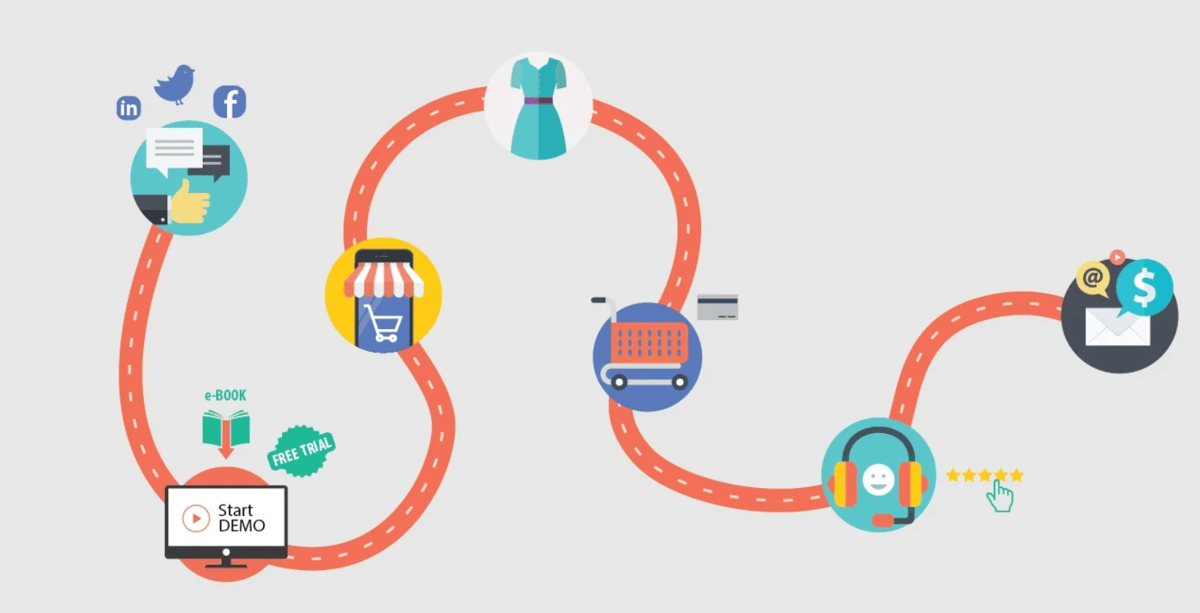
Source: Invisible Puppy
Optimize digital touchpoints relevant for your business
To maximize the effectiveness of your customer journey, it is essential to optimize your digital touchpoints. Only this way you can create a seamless customer journey,
The main challenge with this task lies in knowing where to start. With each brand having its own set of touchpoints and each customer experiencing them differently, it can be overwhelming to determine which areas to prioritize.
And what are the different digital customer touchpoints?
We've explored the five main stages of the customer journey and highlighted the key touchpoints in each of them.
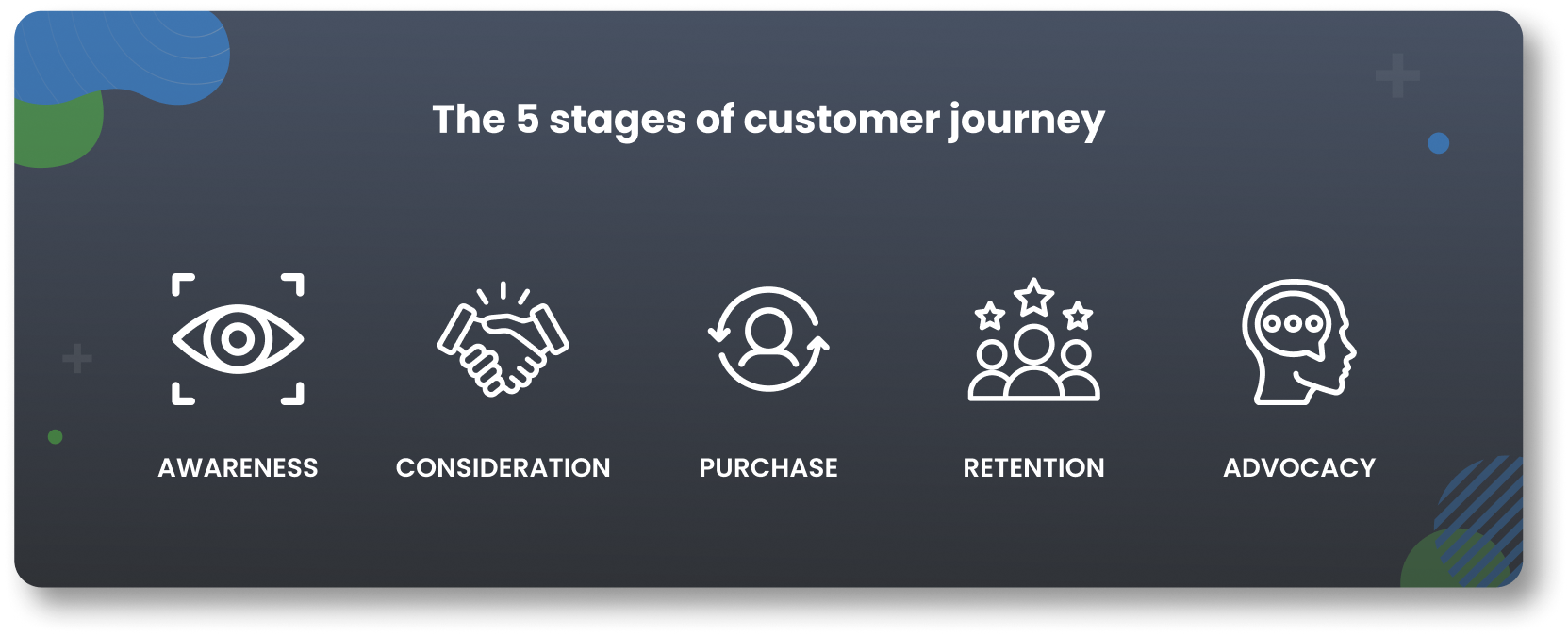
Awareness stage
During the initial stage of the customer journey, known as the Awareness stage, it is crucial to capture the attention of consumers who may not be familiar with your brand or the need for your product.
This is where online advertising and promotional efforts play a vital role. By strategically placing your brand in front of potential customers through multiple digital channels, you can start building awareness and familiarity. This includes tactics such as targeted display ads, social media campaigns, and content marketing.
These digital touchpoints in the awareness stage serve as the first introduction to your company and its offerings, planting the seed of recognition in the minds of consumers and laying the foundation for further engagement and consideration.
1. Google and other search engines
Google is a really powerful search engine that lots of people use. It's the most popular website in the world and almost everyone uses it to find answers to their questions. Because of this, Google is usually the first place people go when they start looking for some product online. That's why it's such an important digital touchpoint for businesses to connect with potential customers.

How to optimize
To ensure your search presence is effective, focus on these key components:
- Google Business Profile
Set up a Google Business Profile to engage with customers easily. It provides essential company information, showcases products/services, and enables direct messaging. It helps you appear in local search results, Google Maps, and allows customers to leave reviews.
- Search Engine Optimization (SEO)
SEO improves website visibility in search engine results, driving organic traffic. Research relevant keywords, optimize content with keywords, obtain quality backlinks, and monitor progress to attract interested leads.
2. PPC ads on multiple channels
If you have the financial resources, consider creating paid search campaigns on multiple platforms.
Let’s take Google as an example. Google Shopping surfaces your products as people browse for ideas using keywords. Since people tend to focus on the top search results, paying for a higher position increases your visibility.
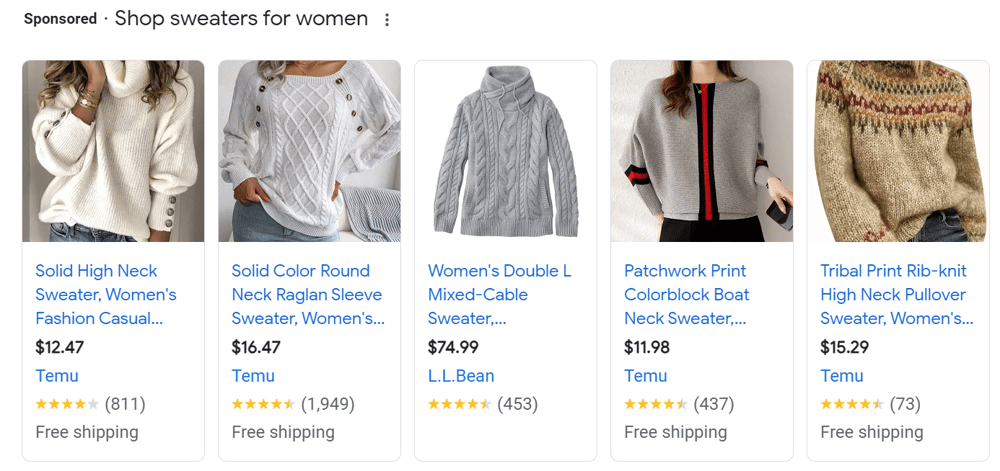
On channels like Facebook, Instagram or TikTok, people are looking for entertainment. These platforms are known for great targeting capabilities. Based on their demographics or interests, you can show them ads that can catch their attention, even if they haven't even looked for any specific products. This way, you increase brand awareness.
How to optimize
Optimizing paid ads is crucial for maximizing the visibility of your digital advertising campaigns. One key aspect of optimization is focusing on the product feed. The product feed serves as the foundation for your ads, containing important information about your products such as titles, descriptions, images, pricing, and attributes. Using a multichannel eCommerce platform can help you with enhancing all of the product data included in your feed.
You need to select relevant keywords that align with your audience and business, and place them in your product titles and descriptions. It is crucial that the content shoppers see upon clicking your ad relates to their search, otherwise, they may leave.
It’s vital to regularly monitor your campaign to make necessary adjustments. Additionally, experimenting with different ad formats using A/B testing can help determine which messaging resonates best with your audience.
Here’s more about Google Shopping feed optimization.
3. Marketplaces
Marketplaces have a significant impact on the buyer journey, starting even before the actual purchase. Currently, 63% of US consumers looking to buy something begin their search on Amazon.
To ensure maximum visibility and reach potential customers who are ready to make a purchase, it is crucial to have a strong Amazon Advertising strategy. Sponsored Products, Sponsored Brands, and Product Display Ads are all highly visible and frequently utilized by consumers.
Consider also presenting your products on other marketplaces like Walmart or eBay.
4. Social Media
Social media has become a significant platform for people to discover and buy products. More than 71% of shoppers have been influenced by social media when making a purchase, making it an important touchpoint in their customer journey.
Consider your target audience and their preferred social media platforms. If you are targeting Gen Z, TikTok is likely where you will find them. For millennials, focusing on Facebook and Instagram would be more effective.
Regardless of the platform, it is crucial to create content that not only promotes your product but also resonates with your target audience. This ensures that your posts engage and compel them to take action. Social media provides an opportunity to create a digital community, enhance your public presence, and cultivate strong brand loyalty.
How to optimize
- Implement a multichannel strategy that allows you to expand your presence across various platforms (such as Facebook, Instagram, TikTok, and more) to ensure broad consumer reach.
- Actively engage with your customers by responding to their comments and interacting with their posts related to your business.
- Consistently share interactive, creative, and shareable content that adds a human touch to your brand.
- Take advantage of customer support tools available on social media platforms, such as messaging apps, to facilitate easy communication between customers and your brand.
5. Peer recommendations
Peer recommendations play a vital role in shaping consumer decisions and influencing purchasing behavior. When individuals receive endorsements or recommendations from their peers, they tend to trust and value these opinions more than traditional advertising.
Peer recommendations serve as a powerful form of social proof, providing reassurance and validation for potential buyers. Whether it's through word-of-mouth conversations, online reviews, or social media interactions, peer recommendations create a sense of authenticity and credibility.
In today's digital age, where information is readily accessible, peer recommendations have become more influential than ever, shaping the choices we make as consumers.
How to optimize
Peer recommendations are not something you can control, so you need to make sure of the quality of your product. Drive peer referrals by highlighting user-generated content, such as social media posts or unboxing videos, and enabling easy sharing of all customer-generated content.
6. Influencer promotion
Influencer promotion has emerged as a powerful digital touchpoint in the customer journey, particularly during the awareness stage. Influencers, with their large and engaged follower bases, have the ability to capture attention and drive conversations around products or services.
By partnering with influencers who align with their brand values and target audience, you can tap into these influencers' credibility and influence to effectively raise awareness about your offerings.
Through sponsored content, product reviews, or endorsements, influencers provide authentic and relatable experiences that resonate with their followers. This form of promotion creates a sense of trust and credibility, allowing potential customers to discover new brands or products they may not have discovered otherwise.
7. YouTube ads
Video ads on platforms like YouTube serve as a powerful digital touchpoint in the awareness stage, capturing viewer attention and promoting various offerings such as new product releases.
These ads have the potential to reach consumers even when they are not actively seeking to make a purchase. By strategically pairing video ads with related content, you can effectively target specific audiences and enhance their awareness of the promoted products or services. The key to successful video ad campaigns lies in understanding your target audience and identifying the right channels and video content that aligns with their interests and needs.
For instance, imagine running ads for fitness apparel during workout tutorial videos. This approach allows you to target fitness enthusiasts who are actively engaged in watching exercise routines.
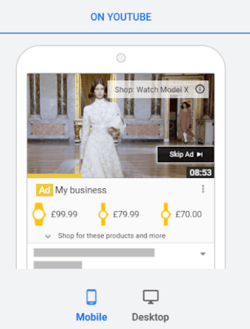
8. Business blog writing
Blogs provide an expansive platform for effectively presenting and elaborating on the unique qualities and features of your products. When consumers embark on a quest to find answers to general questions, such as seeking recommendations for the best products suitable for skincare concerns like acne or anti-aging, they may come across informative blogs created by skincare companies.
These business blogs not only offer valuable educational content but also showcase specific products available for purchase. By offering detailed explanations and insights, blogs serve as a valuable resource that can engage and convert potential customers who are actively seeking solutions to their needs.
Some blog articles may also fall under the consideration stage, for example, articles with a comparison of various products of a particular type, such as “15 best gaming computers in 2023”.
How to optimize
- Identify your target audience and understand their needs, preferences, and pain points.
- Select topics that align with your audience's interests, challenges, and trends in your industry.
- Create compelling and well-researched articles that offer valuable insights, practical tips, and solutions to your readers' problems.
- Use SEO best practices and optimize your blog posts for search engines by incorporating relevant keywords, using descriptive headings, and writing meta tags.
Consideration stage
During the consideration stage of the customer journey, it is essential to engage with consumers who have become aware of your brand and are actively considering their options. At this stage, customers are closer to making a purchase but have not yet completed it.
One effective strategy during this stage is to showcase the value and benefits of your products or services. This can be done through compelling content such as testimonials or case studies. By highlighting how your offerings meet customers' specific needs and solve their problems, you can position your brand as a top contender. It is also crucial to showcase the superiority of your product or brand compared to others by providing evidence and making effective comparisons.
Additionally, providing interactive experiences like virtual demos or free trials can help potential customers experience your products firsthand and gain confidence in their decision-making process.
9. Search engine ads used to compare products
Search engine PPC ads not only serve at the awareness stage of the buyer's journey, but are also a key digital touchpoint at the consideration stage, especially when comparing available products.
These ads provide an opportunity to present your offerings directly to potential customers who are actively seeking information and evaluating various options. By strategically targeting relevant keywords and demographics, PPC ads can effectively capture the attention of users looking for product comparisons.
Optimized search engine ads, whether text or product ads, enable companies to highlight key features, benefits and competitive advantages, encouraging users to search further.
How to optimize
One crucial aspect is optimizing the product feeds submitted to, for example, Google.
- Maximize the number of product attributes included in the feed. Ensure that all relevant product attributes are included in the feed, such as brand, model, size, color, material, features, and specifications. The more detailed and accurate the information, the better users can compare products.
- Optimize product titles so they accurately represent the product. Incorporate relevant keywords that users might search for when comparing products.
- Use high-resolution and visually appealing images that showcase the product from different angles.
- Clearly display pricing information, including any discounts or promotions. If available, include price comparisons with competitors to show the value proposition.
- Incorporate user reviews and ratings if possible, as they add credibility and help users understand the experiences of other customers.
- Keep product feeds up to date by regularly reviewing and updating product information, availability, and pricing.
10. Email marketing
Whether it's expressing gratitude through “thank you” emails, providing notifications, or engaging in upselling and cross-selling efforts, these interactions play a crucial role in the overall customer journey.
Ensuring that customers are regularly informed about discounts, related products, and reminders of abandoned shopping carts is an effective approach for online stores seeking to cultivate strong and enduring relationships with their customers. By leveraging these strategies, businesses can enhance customer satisfaction and loyalty over time.
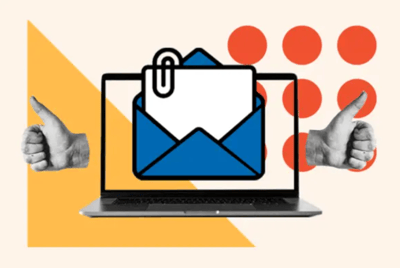
Source: Hubspot
Examples of marketing email you can send to customers:
- Welcome emails: Send a discount code to new customers and express gratitude for choosing your brand.
- Newsletters: regular updates about products, blog posts, and upcoming sales.
- Product updates: significant changes or improvements to products
- Post-purchase emails: Thank customers for their purchase and offer a discount code
- Upselling/cross-selling: offering complementary items to customers based on their previous purchases.
- Sales and special offers: exclusive promotions.
- Feedback surveys
11. Thought leadership
Thought leadership serves as a powerful digital touchpoint in today's fast-paced and information-driven world. By establishing yourself or your brand as a thought leader in a particular industry or domain, individuals and you can effectively engage with your target audience and build trust and credibility.
Through insightful content, such as articles, videos, whitepapers, case studies, infographics, use case diagrams, social media interactions, and other resources, thought leaders provide valuable knowledge, unique insights, and innovative perspectives that can inspire and educate your audience.
This digital touchpoint not only allows you to establish a strong online presence but also enables you to influence industry trends, shape conversations, and attract potential customers.
12. Remarketing/ retargeting
Remarketing, also known as retargeting, plays a vital role as a digital touchpoint in the customer journey during the consideration stage. When a customer interacts with a brand's website or engages with its products or services, their interest is piqued, but they may not make an immediate purchase decision.
This is where remarketing comes into play. By utilizing cookies and pixel-based tracking, brands can strategically display targeted ads to these potential customers across various online platforms.
These personalized ads remind customers of their previous engagement and encourage them to revisit the brand's website or take the desired action. Remarketing keeps the brand top-of-mind and helps build familiarity, reinforce messaging, and ultimately increase the likelihood of conversion.
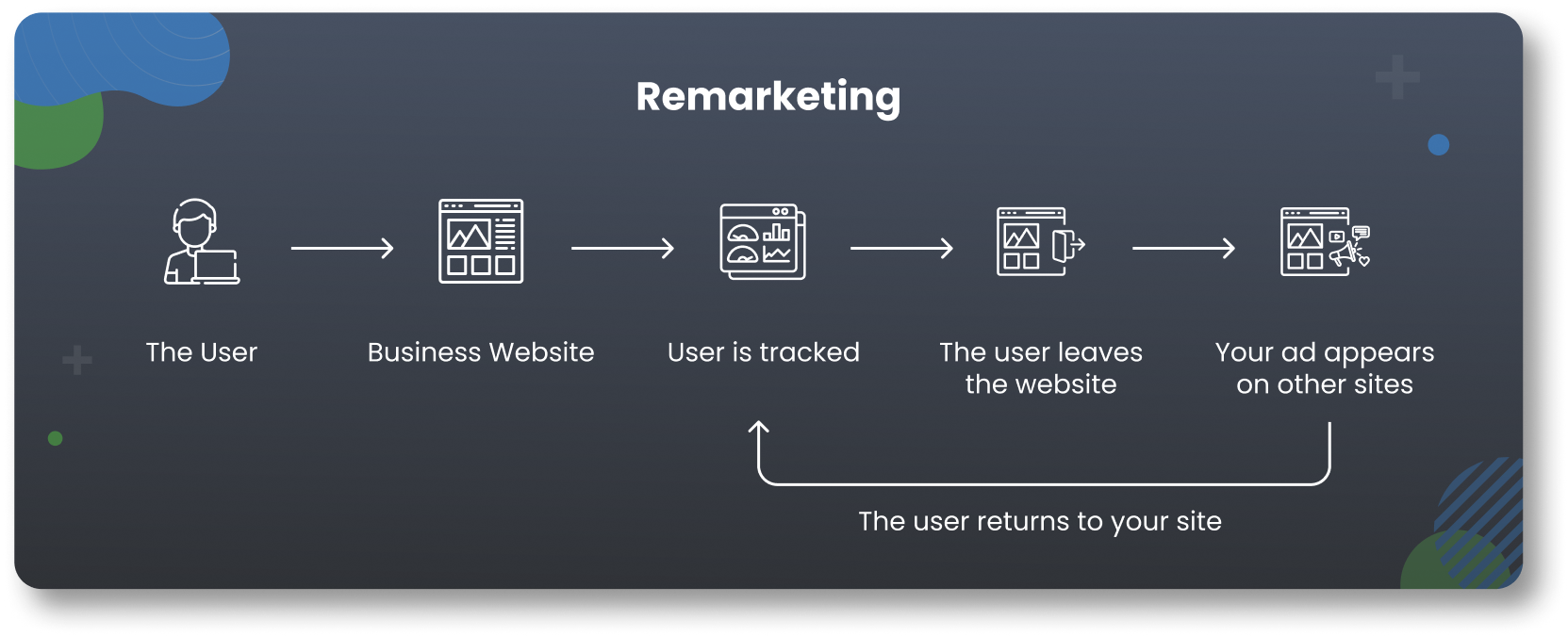
13. Improved product listings
The higher the quality of your product listings, the greater the chance of your ads gaining visibility in search results and convincing customers to make a purchase. It is essential to evaluate the quality of your titles, descriptions, bullet points, and images to not only improve your ranking but also proactively address potential buyers' inquiries about your products. By providing comprehensive information, such as material or quantity, you can effectively answer their questions (without even asking them directly), ultimately increasing the likelihood of a successful sale.
How to optimize
IDescribe your products with as much detail as possible by adding all relevant attributes to your product feed. Online channels and marketplaces always show attributes like titles, images or prices in your ads, but Google, for example, sometimes also shows additional information like material or size.
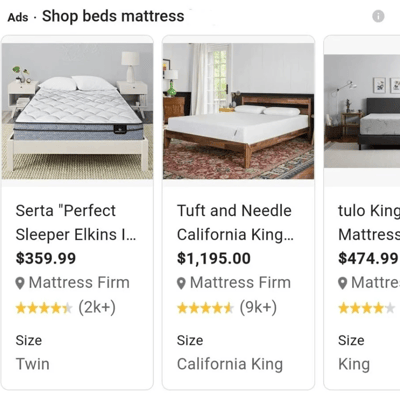
Make sure all product information that may be of interest to customers is easily accessible online.
Decision stage
In the decision stage of the customer journey, it becomes crucial to guide potential customers towards making the final purchasing decision.
One effective strategy is to showcase customer testimonials and reviews that highlight the positive experiences and benefits of your offerings. This social proof helps build trust and confidence in your brand, making it easier for customers to make a decision.
Additionally, offering personalized discounts, limited-time offers, or incentives can create a sense of urgency and encourage customers to take action. By tailoring these promotions to their specific needs and preferences, you enhance their motivation to choose your brand.
Clear and concise information about pricing, features, and benefits can remove any doubts or uncertainties they may have.
Read about: ZMOT - Zero Moment Of Truth
14. Website (pricing page)
Your website is a vital part of your online presence. It's where people go to learn about your business and get their first full impression of your brand (for example after a shopper has seen your ad). That's why it's crucial to put in the time and effort to make sure your website leaves a positive and lasting impact on potential customers.
One of the most crucial page on your website is your pricing page. A well-designed pricing page can help provide transparency, and ultimately influence purchasing decisions. Capturing visitor information effectively using tools like HubSpot's form builder can help you understand your prospects better while they explore pricing options.
How to optimize
- Ensure your website is user-friendly with an intuitive design, easy navigation, and clear calls-to-action.
- Display the pricing information in a clear and easily understandable format.
- Optimize it for mobile devices, as most people use phones for shopping.
- Keep your content relevant and up-to-date to engage visitors.
- Consistently share new content such as blog posts, tutorials from your customer support team, and recent customer reviews.
- Share FAQs and provide all important information that customers need in one place.
- Optimize product pages with detailed descriptions, high-quality images, and more.
15. Customer support
Customer support plays a crucial role as a digital touchpoint during the decision stage of the customer journey. As potential customers evaluate their options and weigh the pros and cons of different brands or products, having reliable and accessible customer support can be a deciding factor.
Through various digital channels such as live chat, email, or social media messaging, customers can reach out to the support team with their inquiries, concerns, or even technical issues. Timely and helpful responses from the support team can provide reassurance and build trust in the brand.
How to optimize
During the decision stage, customers may have specific questions about product features, pricing, or compatibility. Having a knowledgeable support team that can provide accurate and detailed information helps customers make informed decisions.
16. Feedback & customer reviews
Customer reviews and testimonials serve as a valuable form of advertising. Shoppers of all age groups have a consistent behavior of reading reviews before making a purchase. In fact, online reviews are highly trusted, with 49% of individuals considering them as reliable as personal recommendations.
To optimize this significant digital touchpoint, you can actively encourage shoppers to share their feedback by implementing triggered email campaigns or app notifications that prompt them to rate and review products after their purchase.
Positive reviews and ratings can boost confidence in the brand, while addressing negative feedback promptly and professionally demonstrates a commitment to customer satisfaction.
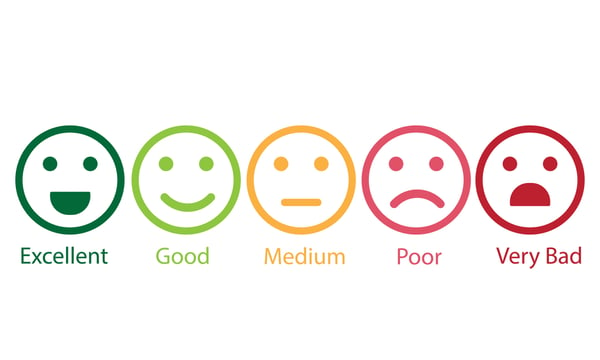
It is essential to consistently monitor the reviews regarding your brand and products. This will allow you to stay updated on any areas that require improvement, such as product quality, customer service, or packaging. Responding to reviews shows your dedication to customers and your commitment to enhancing their experiences.
How to optimize
- Actively motivate all customers to share their reviews and provide feedback following a purchase.
- Ensure regular monitoring and timely response to reviews, demonstrating receptiveness to feedback and appreciation for customer experiences.
- Leverage negative reviews to identify and address customer pain points in order to enhance their satisfaction.
17. Checkout
Ensuring the checkout process is seamless and user-friendly is crucial, but remember there is also room for additional points of sale.
The checkout process presents a valuable opportunity for businesses to boost sales and enhance the overall shopping experience. You can leverage this touchpoint by including a section titled "Other items you might enjoy" or “You might also consider.” This strategy combines cross-selling, personalization, and social proof to entice customers to explore additional products and increase their overall purchase value.
By showcasing additional products or related items on the purchase screen, you can capitalize on the buyer's interest and encourage them to add more items to their cart. Utilizing customer data and purchase history in showing "Other items you might enjoy" section can be tailored to individual preferences and encourages customers to explore further recommendations based on their browsing or purchase history, increasing the likelihood of additional purchases.
Additionally, incorporating customer reviews, ratings, or testimonials alongside the suggested items provides social proof and reassurance about the quality and popularity of those products.
18. Fulfillment & shipping
After a customer places an order, the way you handle fulfillment plays a critical role in shaping their overall satisfaction, repeat purchases, and loyalty. It's important to recognize that customers are highly sensitive to factors such as shipping costs and delivery speed, which can significantly impact their decision to proceed with the purchase or abandon the shopping cart. By automating your fulfillment processes, you can address these concerns efficiently.
Automated fulfillment streamlines the entire order management system, reducing the chances of delays that might lead to customer dissatisfaction. With the ability to route orders to the most suitable carrier promptly, you can meet consumer expectations for fast delivery times, enhancing their overall shopping experience.
To meet customer expectations in this area, it is sometimes necessary to cooperate with companies that offer a comprehensive fulfillment and shipping solution, such as Cart.com.
Cart.com helps businesses manage the entire logistics process, including order management, inventory management and delivery management. By providing end-to-end support, they ensure smooth operations for eCommerce businesses.
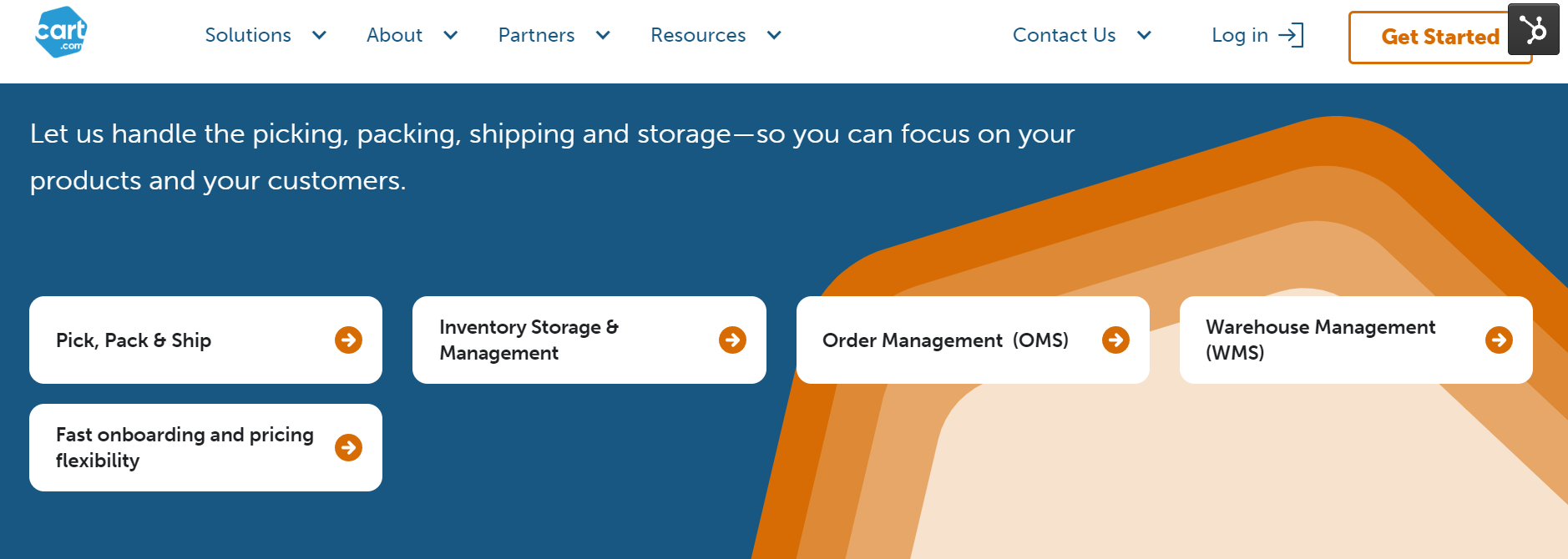
Source: Cart.com
Retention
After the purchase, it is essential to focus on retaining existing customers and fostering long-term relationships. This stage involves strategies that aim to keep customers engaged and satisfied, encouraging them to continue choosing your brand.
To achieve this, personalized communication plays a crucial role. Utilize email marketing campaigns, loyalty programs, and exclusive offers to maintain regular contact with your customers. By providing tailored content and relevant promotions, you can reinforce their loyalty and demonstrate your commitment to their needs.
Additionally, seeking feedback and actively listening to customer concerns can help identify areas for improvement and address any pain points.
19. Custom surveys
Demonstrate your commitment to customer satisfaction by showing new customers that you genuinely care about their experience. You can achieve this by implementing a brief customer survey right after they complete an online purchase. By collecting feedback at this critical moment, you can gather valuable insights into their initial impressions and identify any areas of improvement.
Employing NPS survey tools in this phase helps you measure customer loyalty and satisfaction precisely, offering a vital metric for tracking progress and areas for enhancement. This strategy not only highlights your dedication to customer satisfaction but also enables you to act on feedback to improve the customer journey continuously.
20. Returns
Informing customers when their product return has been successfully processed is an important requirement for ensuring customer satisfaction. However, going beyond this basic step and implementing efficient return management practices is even more crucial.
An effective return management system demonstrates your commitment to customer care and builds trust. When customers have confidence that their returns will be handled promptly and professionally, they feel reassured and are more likely to make repeat purchases in the future. This also fosters loyalty and retention.
By prioritizing a streamlined returns process, you create a positive impression of your brand and establish a strong foundation for lasting customer relationships.
21. Mobile apps
The customer retention stage focuses on retaining existing customers and mobile apps offer unique advantages in achieving these objectives by providing personalized experiences, opportunities for businesses to engage and connect with their target audience.
Mobile apps contribute to customer retention by offering enhanced convenience and accessibility. With just a few taps on their mobile screens, customers can quickly access their favorite products or services, manage their accounts, and make purchases seamlessly. The ease and simplicity provided by mobile apps encourage customers to continue their engagement with the brand, resulting in higher retention rates.

Through data analytics and user insights, you can gather information about customers' preferences, purchase history, and behaviors. Leveraging this data, mobile apps can provide personalized product recommendations, exclusive offers, and tailored content that resonate with each customer.
Apps can leverage push notifications and in-app messaging to send targeted updates, personalized offers, and relevant content directly to the customer's device. These real-time notifications keep customers engaged and informed about new products, promotions, or loyalty rewards.
Loyalty/ Advocacy
The customer loyalty stage is a critical phase in the customer journey, where the focus shifts towards nurturing strong and enduring relationships with existing customers. At this stage, your goal is to deepen customer loyalty and create brand advocates who will continue choosing your products or services.
To achieve this, personalized engagement becomes paramount. Implement strategies such as loyalty programs, exclusive perks, and personalized offers to show your appreciation for their continued support. By providing exceptional customer experiences and tailored rewards, you can foster a sense of exclusivity and make customers feel valued.
Communication plays a vital role in maintaining customer loyalty. Regularly engage with your customers through targeted email campaigns, personalized messages, and social media interactions. This will keep your brand top-of-mind and create opportunities for ongoing engagement.
22. Rewards programs
Rewards/loyalty programs offer two advantages: businesses gain valuable insights into customers' shopping habits, while customers enjoy exclusive promotions that encourage future purchases. These programs are typically free, enabling customers to showcase their loyalty by factoring in their future interactions and purchases with the brand.
Show appreciation to your amazing customers by implementing a customer loyalty program that offers a wealth of benefits and exclusive discounts.
How to optimize
You may want to consider utilizing a point-based system, as it not only drives sales but also incentivizes customers to make purchases. As they accumulate points, they have the opportunity to redeem them for free merchandise or enjoy significant discounts on their future orders.

23. SMS messaging
SMS messaging provides a direct and personal communication channel that can effectively support building long-term relationships and fostering brand advocacy.
One of the key advantages of SMS messaging in the loyalty stage is its ability to deliver timely and relevant information to customers. By sending personalized messages to loyal customers, businesses can provide exclusive offers, discounts, or early access to new products or services. These targeted messages make customers feel valued and appreciated.
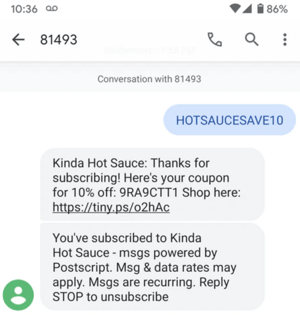
Source: Shopify
SMS messaging is also an effective tool for delivering transactional updates and reminders. Whether it's order confirmations, shipping notifications, or appointment reminders, businesses can keep customers informed about their interactions with the brand.
SMS messaging as a digital touchpoint stands out with its high open and response rates. Compared to other communication channels such as email, SMS messages are more likely to be read immediately. But be careful not to overdo it. Make sure you only send important information that can pique a customer's interest.
24. Referral programs
Harness the power of your most passionate brand advocates by implementing a referral program. By encouraging customers to refer their friends, you can leverage their enthusiasm to expand your reach and easily connect with new audiences.
Encourage referrals by offering enticing rewards such as free items, gift cards, or significant discounts. This not only motivates existing customers to spread the word about your brand but also enables you to tap into untapped markets without having to conduct an extensive search on your own.
As a result, referral programs become a win-win scenario where customers are rewarded for their loyalty while you gain access to a wider audience through the power of word-of-mouth marketing.
Conclusion
In conclusion, the buyer's journey is a multifaceted process involving various digital touchpoints. In this article, we have explored 22 key touchpoints that play a crucial role in guiding and influencing customers on their path to purchase.
However, it's important to note that the digital landscape is constantly evolving and new touchpoints may emerge as technology advances. Each business and industry may also have unique touchpoints specific to their target audience and market dynamics.
We encourage you to share your insights and experiences in the comments section below.


